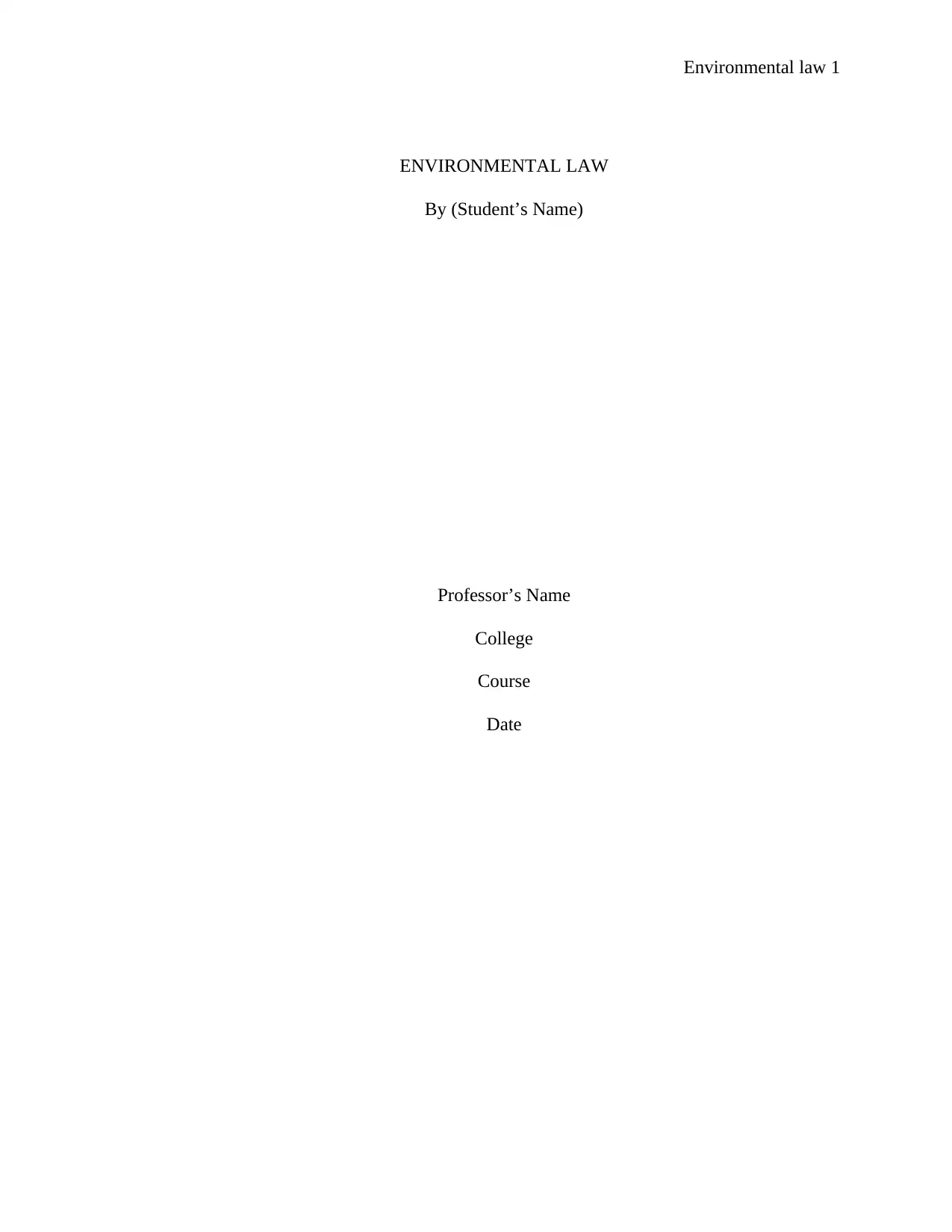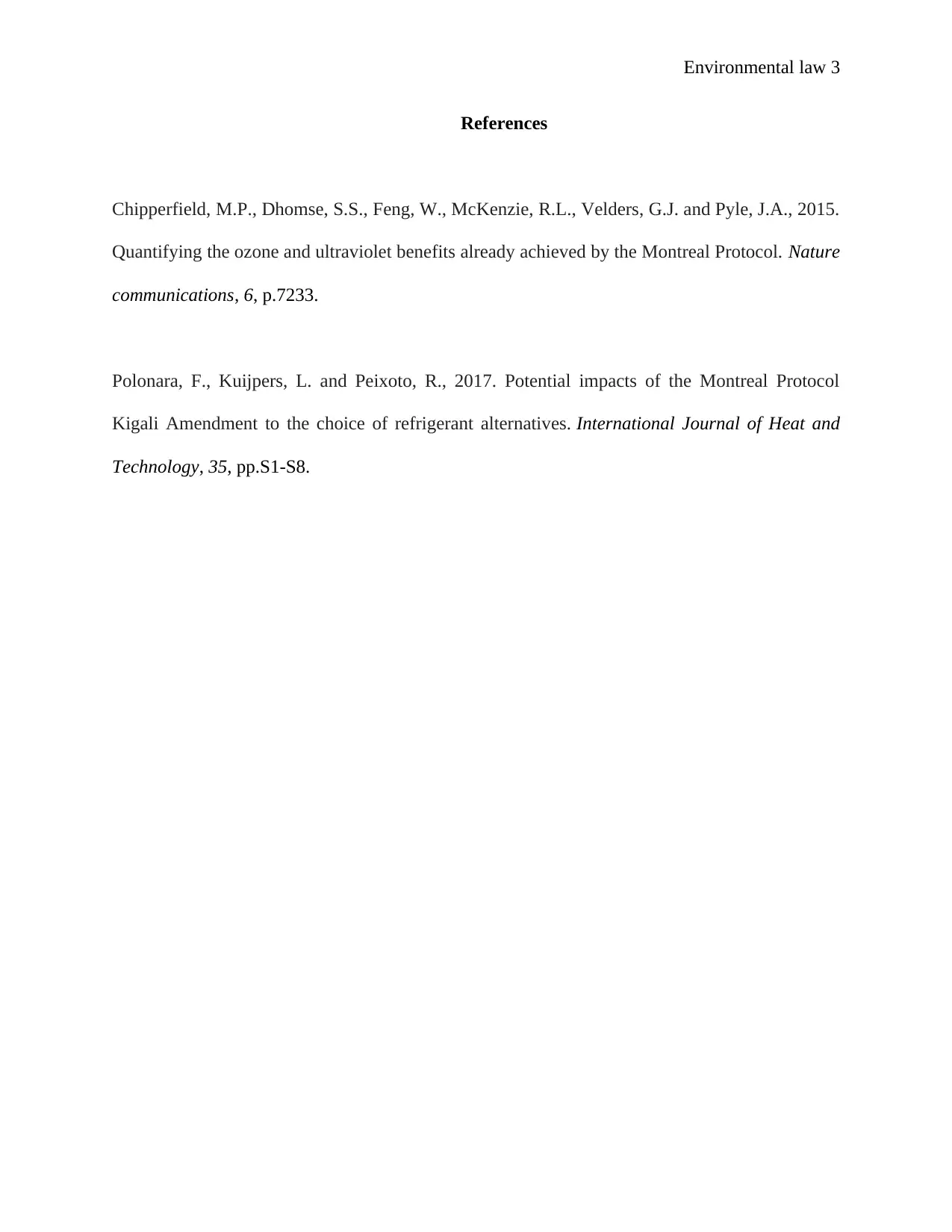Montreal Protocol Ratcheting: A Study in Environmental Law and Policy
VerifiedAdded on 2023/04/23
|3
|452
|211
Essay
AI Summary
This essay examines the Montreal Protocol as an example of the ratcheting effect in environmental law, focusing on its revisions since 1987 to control ozone layer depletion. The protocol, amended nine times, has evolved to include stricter regulations on CFCs and HFCs for both developed and developing countries. Positive incentives, such as economic stability in developed countries, support implementation, while negative incentives include insufficient policies to regulate industrialization, a major cause of ozone depletion. The Kigali Amendment in 2016 further tightened regulations, aiming to reduce CFCs and HFCs by 2030, illustrating the continuous adjustments characteristic of ratcheting. Desklib offers more solved assignments and resources for students.
1 out of 3




![[object Object]](/_next/static/media/star-bottom.7253800d.svg)